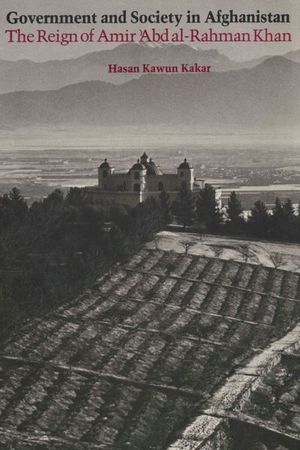Government and Society in Afghanistan
Published by University of Texas Press
An authoritative study of the administrative, social, and economic structure of Afghanistan at the beginning of the twentieth century.
Government and Society in Afghanistan covers a decisive stage in the country’s history. The period covered—the reign of the “Iron” Amir Rahman Khan—was in many ways the beginning of modern Afghanistan as a cohesive nation. It was under the Amir that its borders were established, its internal unification completed, and the modern concept of nationhood implanted.
Hsan Kawun Kakar considers both the internal and the external forces that influenced Afghanistan’s development. Thus, modernization, centralization, and nationalization are seen as both defensive reactions to European imperialism and a necessary step toward capital formation and industrialization.
The first part of the book covers the government of the Amir, from the personality of the ruler to a comprehensive overview of taxation and local government. The second part views these economic and social institutions from the perspective of the major segments of the populace—including nomads, townsmen, tribes, women, slaves, landowners, mullahs, merchants, and others.
Government and Society in Afghanistan covers a decisive stage in the country’s history. The period covered—the reign of the “Iron” Amir Rahman Khan—was in many ways the beginning of modern Afghanistan as a cohesive nation. It was under the Amir that its borders were established, its internal unification completed, and the modern concept of nationhood implanted.
Hsan Kawun Kakar considers both the internal and the external forces that influenced Afghanistan’s development. Thus, modernization, centralization, and nationalization are seen as both defensive reactions to European imperialism and a necessary step toward capital formation and industrialization.
The first part of the book covers the government of the Amir, from the personality of the ruler to a comprehensive overview of taxation and local government. The second part views these economic and social institutions from the perspective of the major segments of the populace—including nomads, townsmen, tribes, women, slaves, landowners, mullahs, merchants, and others.
BUY NOW FROM
COMMUNITY REVIEWS
